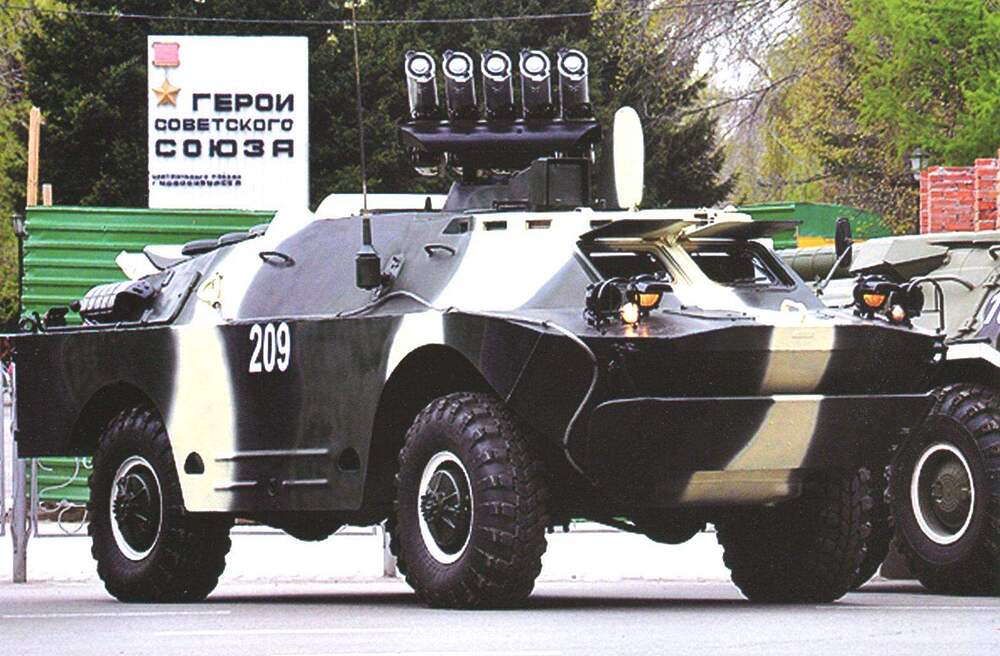- Yes
- No
Welcome to the suggestion for the 9P148! This is a Soviet wheeled tank destroyer equipped with 5× anti-tank missiles in a launcher on top of a BRDM-2 chassis. Specifically, the 9P148 uses the 9M113 missile, but can also use the 9M111. In War Thunder, I think it would be interesting to have both available as options, perhaps with some more modern versions of each, such as the 9M113M, which has a tandem warhead. Regardless, I think the 9P148 would be a good addition to the USSR’s ground forces, providing a fast missile launcher, with an excellent capability for follow up shots if needed.
History
9P137s in Moscow during a parade, November 7th, 1974.
In the 1960s, the Soviet Union had an issue with its anti-tank missile carriers. At the time, most anti-tank missiles relied on manual guidance, relying on the operator to constantly adjust the missile’s flight path to ensure a hit, not to mention that the missile itself had a limited range. In service at the time was the 9P27, a BRDM-1 scout car fitted with three 3M6 ‘Shmel’ missiles, as well as the newer 9P124, a BRDM-2 scout car with 9M17 ‘Falanga’ missiles. Being a largely conscript army, the Soviet Army realized it would be easier on its soldiers to have a more simple, yet reliable missile carrier for use in supporting its Motorized Rifle units.
In 1966, the Ministry of Defense Industry began a competition for a SACLOS guided missile carrier. A notable entry into the competition was Kolomna Machine Design Bureau, who wanted to utilize their 9M114 ‘Shturm’ missile then under development. The other team, Tula Machinery Design Bureau was hoping to incorporate their 9M111 ‘Fagot’ into their design. In development alongside the 9M111 was the 9M113 ‘Konkurs’, which was faster and had better penetration, while not being much larger. Due to this, Tula’s design would be able to fire either the 9M111 or 9M113. In the end, Tula won, largely due to the ability for their 9P148 design, based on the BRDM-2, being capable of carrying a decent load of missiles while remaining relatively lightweight.
9P148s in Moscow during a parade, circa 1970s.
On January 18th, 1974, the 9P148 entered service with the Soviet Army after approval by the Soviet Union’s Central Committee and Council of Ministers, entering service alongside the 9M113. The launcher used on the 9P148 mounted five missiles on top, and could carry around 10 extra missiles in the hull. The gunner used two TNPO-170 observation devices, as well as a 9Sh119M1 optical sight with 10× magnification. The crew of two used an R-124 tank intercom, which was replaced by the R-173 in 1981. The vehicle could not fire on the move, and had to be fired in a stationary position. While it could deliver excellent firepower against armor or fortifications, the 9P148 was still based on the BRDM-2, and as such had 10 mm of armor maximum, barely enough to deflect rifle caliber ammunition.
The 9P148 was exported to a number of countries in the Warsaw Pact, and would continue to see service after the dissolution of the Soviet Union with the Russian Federation. It saw combat a few times, such as in the Gulf War with Iraqi forces, and a few have even been spotted in Syria in 2014, and in service with Russia and Ukraine during the ongoing Russian invasion of Ukraine.
A Russian 9P148 during fighting near Vuhledar, June, 2023.
Specifications

- Crew: 2
- Length: 5.75 m
- Height: 2.49 m
- Width: 2.35 m
- Mass: 7 tons
- Armament: 5× 9M111 or 9M113 anti-tank missiles
- Ammunition stowed: 10× missiles
- Maximum speed: 95 km/h
- Maximum range: 750 km
- Engine: 140 hp GAZ-41 V8 Petrol
- Wall: 0.4 m
- Trench: 1.2 m
- Gradient: 60%
- Fording: Amphibious























